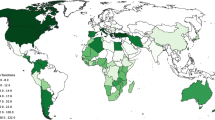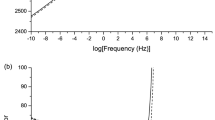Abstract
“What is the maximum possible ground motion near an earthquake fault?” is an outstanding question of practical significance in earthquake seismology. In establishing a possible theoretical cap on extreme ground motions, the representation integral of elasticity, providing an exact, within limits of applicability, solution for fault radiation at any frequency, is an under-utilized tool. The application of a numerical procedure leading to synthetic ground displacement, velocity, and acceleration time histories to modeling of the record at the Lucerne Valley hard-rock station, uniquely located at 1.1 km from the rupture of the M w 7.2 Landers, California event, using a seismologically constrained temporal form of slip on the fault, reveals that the shape of the displacement waveform can be modeled closely, given the simplicity of the theoretical model. High precision in the double integration, as well as carefully designed smoothing and filtering, are necessary to suppress the numerical noise in the high-frequency (velocity and acceleration) synthetic motions. The precision of the integration of at least eight decimal digits ensures the numerical error in the displacement waveforms generally much lower than 0.005% and reduces the error in the peak velocities and accelerations to the levels acceptable to make the representation theorem a reliable tool in the practical evaluation of the magnitude of maximum possible ground motions in a wide-frequency range of engineering interest.
Similar content being viewed by others
References
Aki, K. (1967). Scaling law of seismic spectrum. Journal of Geophysical Research, 72, 1217–1231.
Aki, K., & Richards, P. G. (1980). Quantitative Seismology. San Francisco: W. H. Freeman and Company.
Anderson, J. G., & Richards, P. G. (1975). Comparison of strong ground motion from several dislocation models. Geophysical Journal of the Royal Astronomical Society, 42, 347–373.
Andrews, D. J., Hanks, T. C., & Whitney, J. W. (2007). Physical limits on ground motion at Yucca Mountain. Bulletin of the Seismological Society of America, 87, 1771–1792.
Anil-Bayrak, N. A., & Beresnev, I. A. (2009). Fault slip velocities inferred from the spectra of ground motions. Bulletin of the Seismological Society of America, 99, 876–883.
Båth, M. (1974). Spectral analysis in geophysics. Amsterdam: Elsevier.
Beresnev, I. A. (2001). What we can and cannot learn about earthquake sources from the spectra of seismic waves. Bulletin of the Seismological Society of America, 91, 397–400.
Beresnev, I. A. (2003). Uncertainties in finite-fault slip inversions: To what extent to believe? (A critical review). Bulletin of the Seismological Society of America, 93, 2445–2458.
Beresnev, I. (2013). Reflections on frequency dependence in earthquake-source inversions. Natural Hazards, 66, 1287–1291.
Beresnev, I. A. (2017). Factors controlling high-frequency radiation from extended ruptures. Journal of Seismology. doi:10.1007/s10950-017-9660-6. (in press, published online April 5, 2017).
Beresnev, I. A., & Atkinson, G. M. (1997). Modeling finite-fault radiation from the ω n spectrum. Bulletin of the Seismological Society of America, 93, 67–84.
Beresnev, I. A., & Atkinson, G. M. (1998). Stochastic finite-fault modeling of ground motions from the 1994 Northridge, California, earthquake. I. Validation on rock sites. Bulletin of the Seismological Society of America, 88, 1392–1401.
Beresnev, I. A., & Atkinson, G. M. (2002). Source parameters of earthquakes in eastern and western North America based on finite-fault modeling. Bulletin of the Seismological Society of America, 92, 695–710.
Beresnev, I. A., & Wen, K.-L. (1996). Nonlinear soil response—a reality? Bulletin of the Seismological Society of America, 86, 1964–1978.
Boore, D. M. (1983). Stochastic simulation of high-frequency ground motions based on seismological models of the radiated spectra. Bulletin of the Seismological Society of America, 73, 1865–1894.
Brune, J. N. (1970). Tectonic stress and the spectra of seismic shear waves from earthquakes. Journal of Geophysical Research, 75, 4997–5009.
Field, E. H., Johnson, P. A., Beresnev, I. A., & Zeng, Y. (1997). Nonlinear ground-motion amplification by sediments during the 1994 Northridge earthquake. Nature, 390, 599–602.
Harris, J. W., & Stocker, H. (1998). Handbook of mathematics and computational science. Berlin: Springer.
Haskell, N. A. (1969). Elastic displacements in the near-field of a propagating fault. Bulletin of the Seismological Society of America, 59, 865–908.
McGarr, A., & Fletcher, J. B. (2007). Near-fault peak ground velocity from earthquake and laboratory data. Bulletin of the Seismological Society of America, 97, 1502–1510.
Ohnaka, M. (1973). A physical understanding of the earthquake source mechanism. Journal of Physics of the Earth, 21, 39–59.
Olson, A. H., & Apsel, R. J. (1982). Finite faults and inverse theory with applications to the 1979 Imperial Valley earthquake. Bulletin of the Seismological Society of America, 72, 1969–2001.
Ripperger, J., Mai, P. M., & Ampuero, J.-P. (2008). Variability of near-field ground motion from dynamic earthquake rupture simulations. Bulletin of the Seismological Society of America, 98, 1207–1228.
Schmedes, J., & Archuleta, R. J. (2008). Near-source ground motion along strike-slip faults: Insights into magnitude saturation of PGV and PGA. Bulletin of the Seismological Society of America, 98, 2278–2290.
Sheriff, R. E., & Geldart, L. P. (1995). Exploration seismology (2nd ed.). Cambridge: Cambridge University Press.
Strasser, F. O., & Bommer, J. J. (2009). Strong ground motions—have we seen the worst? Bulletin of the Seismological Society of America, 99, 2613–2637.
Wald, D. J., & Heaton, T. H. (1994). Spatial and temporal distribution of slip for the 1992 Landers, California, earthquake. Bulletin of the Seismological Society of America, 84, 668–691.
Author information
Authors and Affiliations
Corresponding author
Appendix
Appendix
We need to show that the convolution integral
used in the first term of the integrand in Eq. (1) is the same as the function
appearing instead in the original Eq. (14.37) of Aki and Richards (1980).
We start with the convolution (A1) and switch to a new integration variable \(t^{''} = t - t'\), transforming (A1) to
With the use of Barrow’s theorem, \(\frac{\text{d}}{{{\text{d}}x}}\mathop \int \limits_{a}^{x} f\left( t \right){\text{d}}t = f(x)\) (e.g., Harris and Stocker 1998, p. 552), (A3) is re-written as
where we renamed the variables of integration in the right-hand side. Integrating (A4) by parts, noting that \({\text{d}}t/{\text{d}}t^{\prime } = 0\), and observing that several terms cancel, we transform the right-hand side of (A4) to
Equation (A5) can be re-cast as
If we now introduce the function \(F(t)\) as in (A2) and note that, by Barrow’s theorem,
(A6) becomes
which is the desired equation (A2).
Rights and permissions
About this article
Cite this article
Beresnev, I.A. Simulation of Near-Fault High-Frequency Ground Motions from the Representation Theorem. Pure Appl. Geophys. 174, 4021–4034 (2017). https://doi.org/10.1007/s00024-017-1623-x
Received:
Revised:
Accepted:
Published:
Issue Date:
DOI: https://doi.org/10.1007/s00024-017-1623-x











